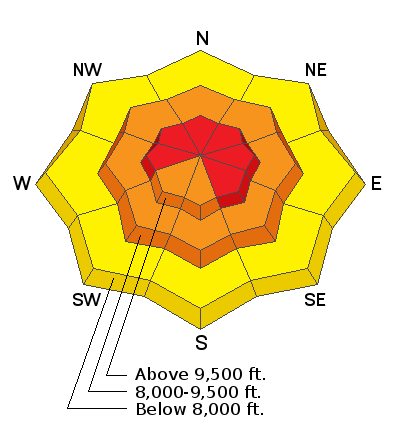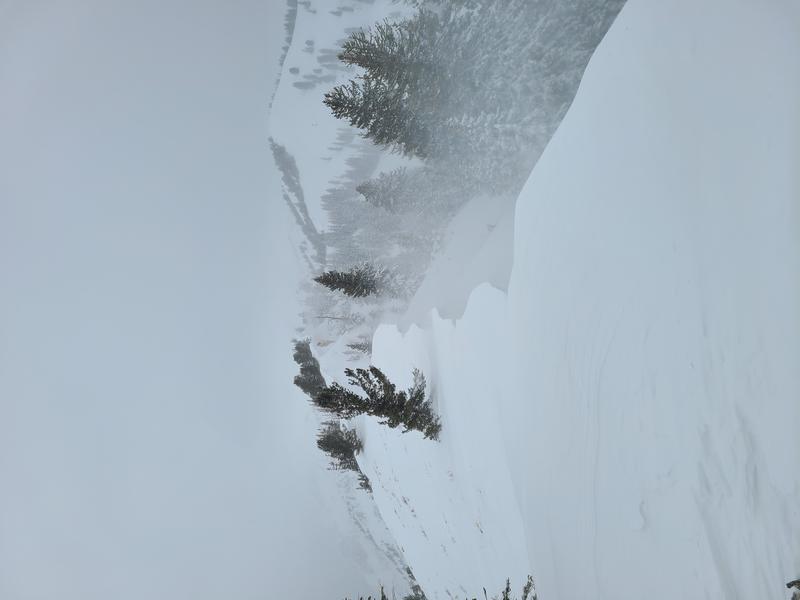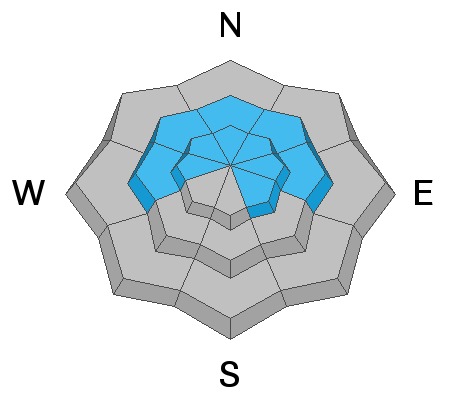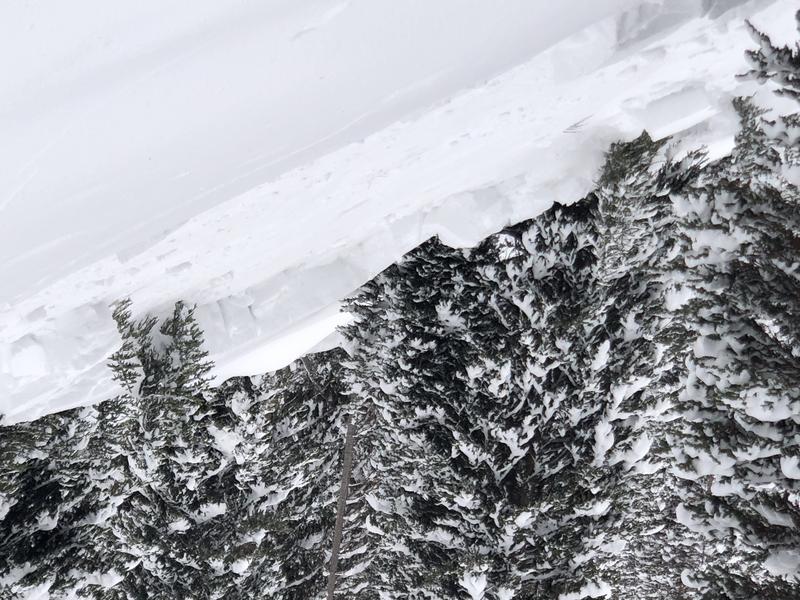SPECIAL NOTE: HALF OF ALL SKIER/SNOWBOARDER FATALITIES SINCE 99/00 HAVE OCCURRED WITH PEOPLE GOING OUT OF BOUNDS AT A SKI AREA.
Do you have the essential avalanche rescue gear (transceiver, probe, and shovel) and do you know how to use them? Watch this video to see how the three pieces of equipment work together.
This morning temperatures range through the low to mid 20's F, and the southerly winds (shifting between southwest and southeast) continue to blow moderate to strong. At the mid elevations winds are averaging in the teens and 20's mph, with gusts in the 30's mph. Along upper elevation ridges, averages are in the 20's with gusts in the 50's mph.
For today increasing clouds with light snow developing later this afternoon. Temperatures will be in the 20's and low 30's F and the southerly winds will continue to drift snow, averaging in the teens's with gusts in the 30's and 40's mph at mid elevations while averaging in the 20's with gusts in the 50's mph at upper elevations.
We may pick up a few inches of snow by late in the day, and a better chance for snowfall overnight as the flow switches to the northwest. The Provo-area mountains may pick up 6-8" by later Saturday.
High pressure moves in by Sunday, but it may be short-lived with a potentially larger storm forecasted by midweek.
Week in Review: Although specific to the Salt Lake mountains, this past week has been active with lots of (1) snow, (2) wind, and (3) avalanches. Catch up by reading our latest
Week in Review.
No avalanches were reported from the Provo mountains on Thursday. Further north in the Salt Lake mountains, six avalanches were reported from the backcountry on Thursday, three natural and three skier-triggered. Skier-triggered slides include
-
Powder Park (3.5' deep over 150' wide) Wind-loaded northerly slope at 9,400'
And it only took one day for
South Monitor to naturally avalanche once again. The slope naturally avalanched on Wednesday, but strong southerly winds quickly overloaded the slope and it ran again on Thursday, 2' deep and up to 500' wide, running on Nov/Dec facets. I think it is likely that many slopes that have already avalanched in the Provo mountains have either avalanched again, or are primed to repeat avalanche.
Special Public Announcement: IF you trigger an avalanche near one of the resorts - even if no one is involved - please call it into the ski patrol so they don't have to put themselves in harm's way to conduct a meaningless rescue.
As always, you can find all observations and recent avalanches
HERE. 











